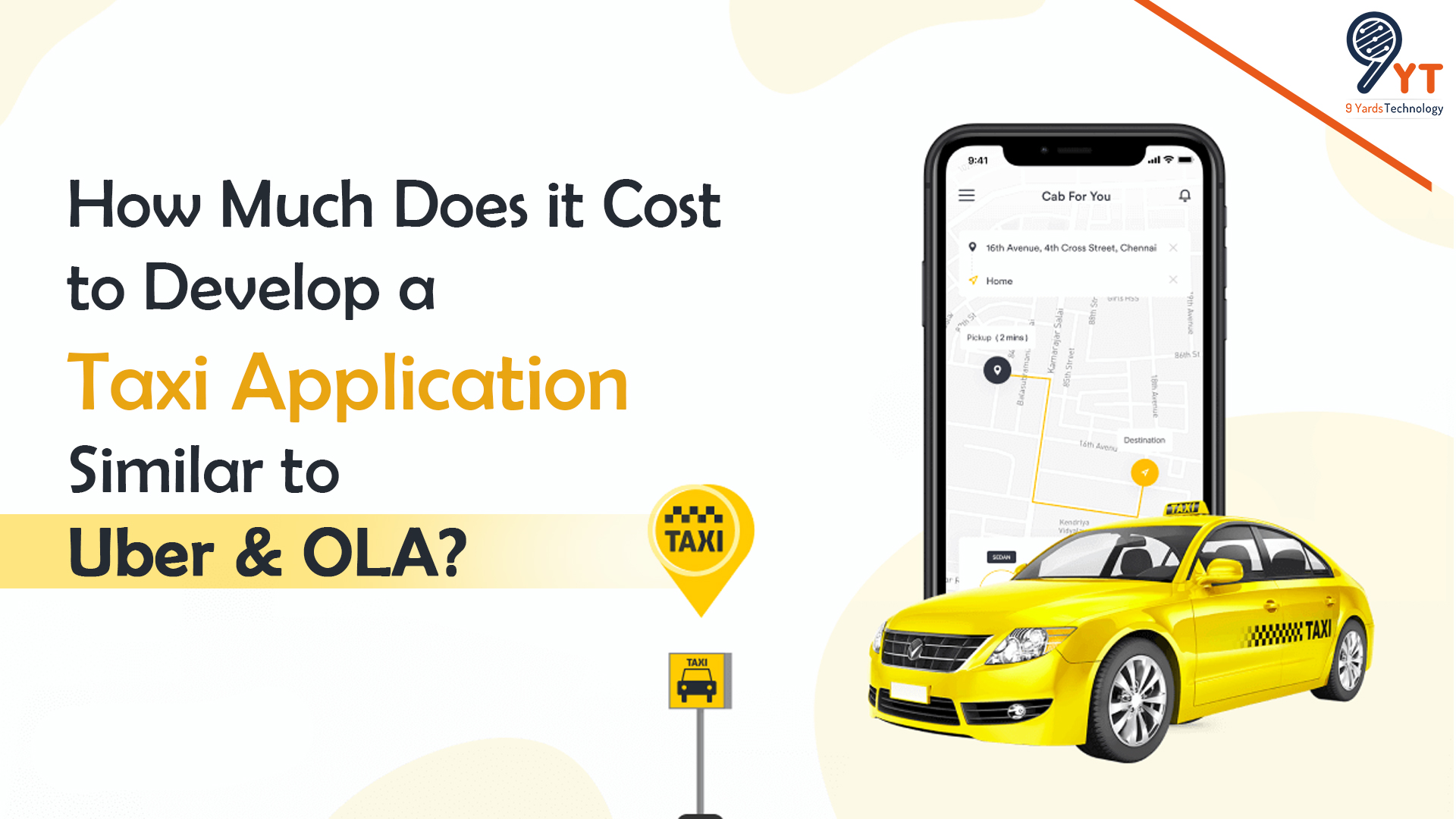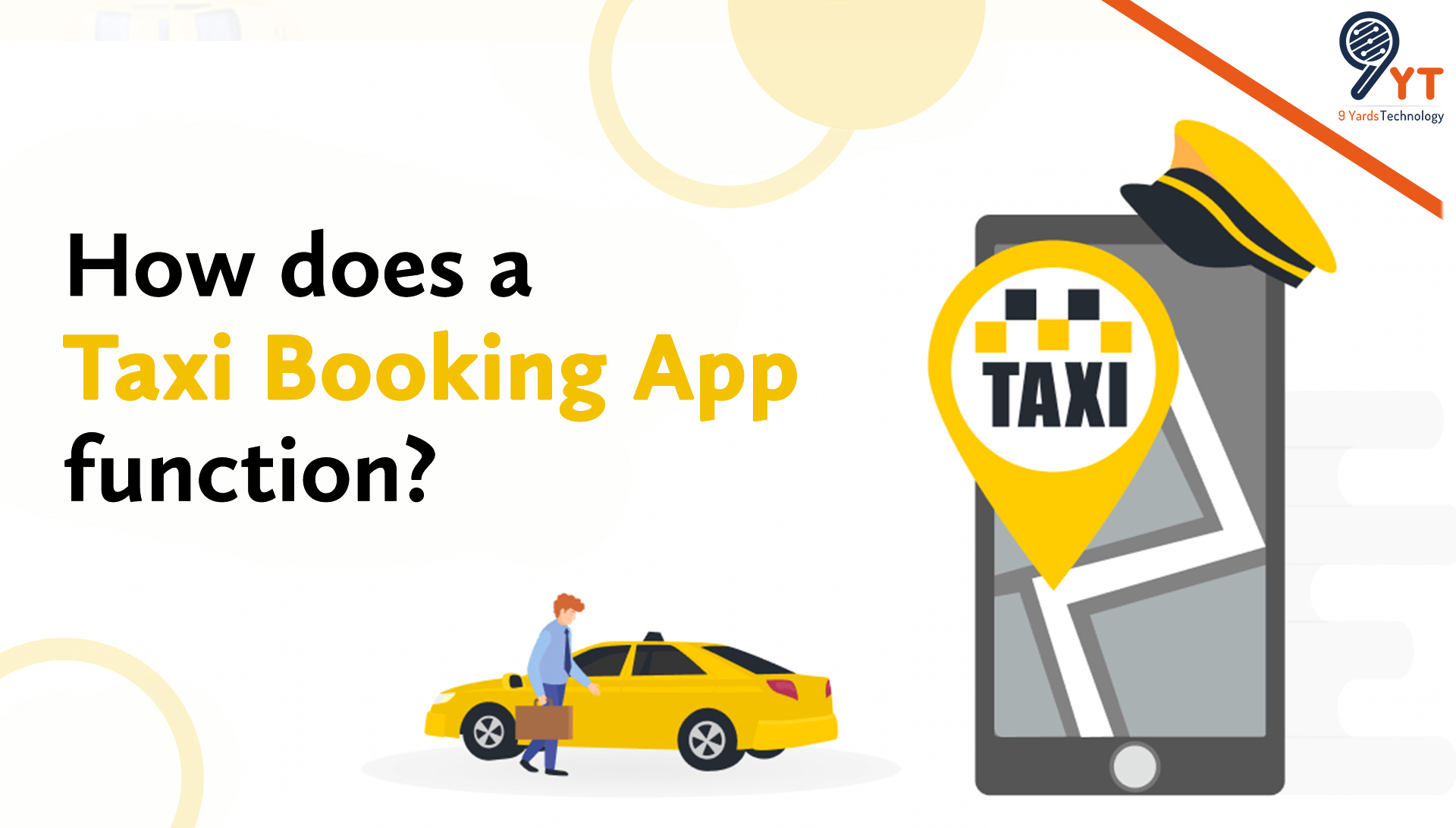
In the modern world, driving may be stressful, especially in big cities for many reasons such as insane traffic, inflated petrol prices, parking issues and several others. Owing to these problems, taxi services are a boon because most people prefer easy travel to face travelling issues on a regular basis.
Businesses like OLA and Uber have made it possible to order a cab using a convenient smartphone application. We no longer have to worry about traffic or finding a parking spot. Instead, we can just sit back, relax, and enjoy the pleasure of riding a personal automobile without any stress.
People like taking relaxing, stress-free trips, and as a result, a lot of entrepreneurs or companies are recognizing the potential in this market and want to launch their own taxi or ridesharing services.
Over the past several years, automobile rental applications have invaded the app stores. But because you are undoubtedly reading this post to learn how much it will actually cost to construct a mobile application for cab booking, let’s first discuss how a taxi service mobile app functions. The quantity of functionality you wish to include in the initial phase of your mobile application will undoubtedly affect the price. So let’s first talk about some important factors of developing a mobile app for taxi applications like OLA and Uber!
Types of Taxi Booking Apps
Dedicated Taxi App
Entrepreneurs with an existing fleet of vehicles and drivers may commission the development of a specialized taxi app. The app represents the firm, and you may grow your business and attract new clients by using digital media.
Third-party adverts or the traffic your website generates would be the main sources of income for this kind of taxi booking app.
Aggregator Taxi App
This would be an OLA/Uber-like app that operates on a system where you don’t need many vehicles and drivers. So the clients will get in touch with the drivers directly and you will just list the drivers together with their cabs. Yu can charge both the clients and drivers for a ride and this would be the source of income for this kind of app.
How does a taxi booking app function?

The following steps explain the working of a taxi app in simple words:
- A user requests a specific type of automobile depending on its availability and the nearest driver receives the data automatically.
- It would be the driver’s choice to either accept or reject the ride. The request will be sent to another driver if he denies it.
- Customers are able to follow the vehicle in real-time and learn the anticipated arrival time.
- Customers have the option of making payments at their convenience using cash or a cashless method. Custom’s ability to predict the cost of the entire voyage in advance is another useful feature.
- Last but not least, following the ride, the consumer rates the driver based on a variety of factors.
Three panels of a taxi booking app

Like many other cab applications, OLA/Uber did not become well-known overnight. It costs a lot of money and requires a lot of time to produce a taxi booking mobile application such as OLA/Uber. Therefore, you may be thinking about how a taxi app of a similar nature may be developed. Firstly, it is crucial to learn about the three basic panels of a taxi booking application.
The three panels of a taxi booking app are the client panel, the driver panel, and the admin panel. Let’s examine the many features that are offered for each panel.
Panel for Clients 
The most basic functions of the client panel include the following:
- User Login & Registration: To make it easy for users to use the program, the user registration and login processes must be simple.
- Profile Editing: The ability for passengers to change the basic data they have uploaded to their profile should be granted.
- Cab Booking: Riders may arrange cab bookings to accommodate their travel requirements.
- Different payment gateways: To make payments simple for consumers, the taxi booking software must offer a variety of payment methods.
- Notifications: You cannot avoid including the alerts function if you are creating a taxi booking app in 2023. Email, SMS, in-app communications, and push notifications are all available as notification options for travellers.
- Live Monitoring: Real-time tracking of the vehicle’s position must be available to the passengers.
- Automatic Fare Calculation: When booking cab services, passengers look for automatic calculation of fare for convenience.
- Feedback: After the ride passengers can rate their rides, share their experiences with the driver, and provide feedback.
Panel for Drivers

The most basic functions of the driver panel include the following:
- User Registration & Login: The process is a little challenging for drivers. Admin needs to approve the profiles of drivers before they can start working for the app.
- Profile Edition: It must be possible for Drivers to change their phone number, email address, and other information on their profile.
- Booking Confirmation: Drivers are free to accept or reject bookings as they see fit.
- Live Monitoring: The position of the passengers may be tracked in real-time, and the quickest route is suggested to the driver.
- Ticket History Monitoring: Through the app, drivers may view their past trips.
- Income Tracker: Drivers should have access to their daily and weekly summaries of trips and profits.
Panel for Admin

The most basic functions of the admin panel include the following:
- Trip Details: Detailed information regarding booked, completed, and current rides should be accessible to Trip Details Admins.
- Report Tracking: Charts showing real-time data on the activities of the drivers, the revenue from booked but untaken journeys, and requests to refuse the ride.
- Revenue Monitoring: The revenue management function allows for transactions that must be within the admin’s supervision.
- Driver Control: New drivers must have their information available on a relevant page after receiving admin approval.
- Passenger Control: To enhance the user experience, administrators must have access to the admin panel to see and modify user information.
- Controlling Complaints: The administrator is responsible for resolving passenger concerns.
How much does it cost in India to develop an app similar to OLA/Uber?
You are now aware of the qualities that an Uber or OLA-like taxi app must have. Let’s talk more about the price of developing a taxi app in India.
Taxi app developers and mobile app development companies in the US and Canada charge between $100 and $300 per hour. Additionally, they charge between $30 and $55 per hour in Eastern Europe.
The cost of developing a taxi app in India is straightforward: the more features you add, the more money it will cost.
As mentioned earlier, three applications must be created to create a taxi app like OLA or Uber: a rider, driver, and admin app. The estimate from the app development business covers the following services:
-
- UI/UX Design
- iOS, Android, or Native App
- Back-end programming
- Website creation
- Project administration
- Testing and quality control
The following professionals are required for the creation of a taxi app similar to Uber and OLA:
- Project Manager or Team Manager
- UI and UX Designer
- 4-5 Developers
- Quality Assurance Engineer
- 2-3 Back-end programmers
The approximate number of hours that developers will need to construct a mobile app for booking taxi app is:
- For the Rider app – 450 hours
- For the Driver’s app – 210 hours
- For the Admin panel – 180 hour
The hourly rate of your developer or the app development firm determines the overall cost of developing a taxi app in India.
Taxi Booking App Development Cost Breakdown
Let’s calculate the overall cost of developing an iOS and Android taxi booking app.
Solution 1 – Native Development
Native Development |
Android |
IoS |
| Mobile Application Development | $6,500 | $7,800 |
| UI/UX Design | $3,000 | $3,000 |
| Backend Development | $5,000 | $5,000 |
| Admin Panel Development | $4,100 | $4,100 |
| Quality Assurance | $3,000 | $3,000 |
| Project Management | $4,000 | $4,000 |
Solution 2 – Hybrid/Cross-platform Development
Hybrid/Cross-platform Development |
Costing |
| Mobile Application Development | $8,000 |
| UI/UX Design | $3,000 |
| Backend Development | $4,000 |
| Admin Panel Development | $4,100 |
| Quality Assurance | $4,500 |
| Project Management | $3,000 |
The estimate is tentative and dependent on several variables. It may be discussed while the final agreement is being made.
Features that affect a taxi booking app’s cost
Is building an OLA/Uber clone app expensive? This is one of the first queries that company owners have when considering building an OLA-like app. The entire cost of building an app like OLA/Uber will be determined by the app’s numerous features and functionalities. Let’s examine the following fundamental components:
Features
The cost of developing an app is directly proportional to the number of features in the app. More features simply mean more cost of the app development. The program gets more useful as we add more sophisticated features to it.
Over and above that, in case API integration includes more features, it also enhances the overall costs of development.
App Designing
Your app’s design will determine its viability. The OLA/Uber alternative app’s design also influences how much it will cost to produce. A clever strategy is expensive when compared to a simple design. Due to its simplicity of use, its user-friendly interface attracts more people. It will take about 100 hours to design the user interface, wireframes, and user experience.
Techstack
The Technologies used to create mobile apps are crucial in determining the entire cost of building an app. It is advised to select an effective and cost-effective tech stack throughout the whole development process, from planning to building the front end and back end of the application.
Size of the app
The size of an app is determined by how many features and functions are offered overall. Based on the overall amount of components and functions, the typical cost of building a taxi booking app is determined.
The App’s Complexity
You will need to invest more time and resources the more complicated your project’s requirements are.
- Cost of an app with basic and complex features: $10,000 to $30,000
- Cost of a medium-complexity app: $30,000 to $50,000
- Cost of an app with large or sophisticated features: $50,000+
Location of developers
The geographical location of the developers and the size of their development team also affect how much it costs to create cab booking apps, taxi apps, or the finest taxi booking apps like OLA/Uber. For instance, you could have to spend significantly more money to build an identical product with US developers than with Indian developers.
Updations
Last but not least, the cost of the app development project is increased by requirements revisions and any changes made to the programme once it has been developed. It is advisable to make a list of all potential needs and features while developing an application prototype.
Conclusion
OLA/Uber are a serviceable programme that can offer basic services, but every new competitor in the industry has space to innovate. It’s essential to create your value proposition, pinpoint your target market, and create a monetization strategy that will bring in money for your online taxi booking service like OLA. With the assistance of the development team at 9Yards Technology, find the best solution that meets your demands and aids in the accomplishment of your business’s objectives.





AnnaMoroz
August 29, 2025Fantastic article! Leveraging US IT staffing services in Noida is a smart strategy for businesses aiming to scale quickly and independently with global tech talent.